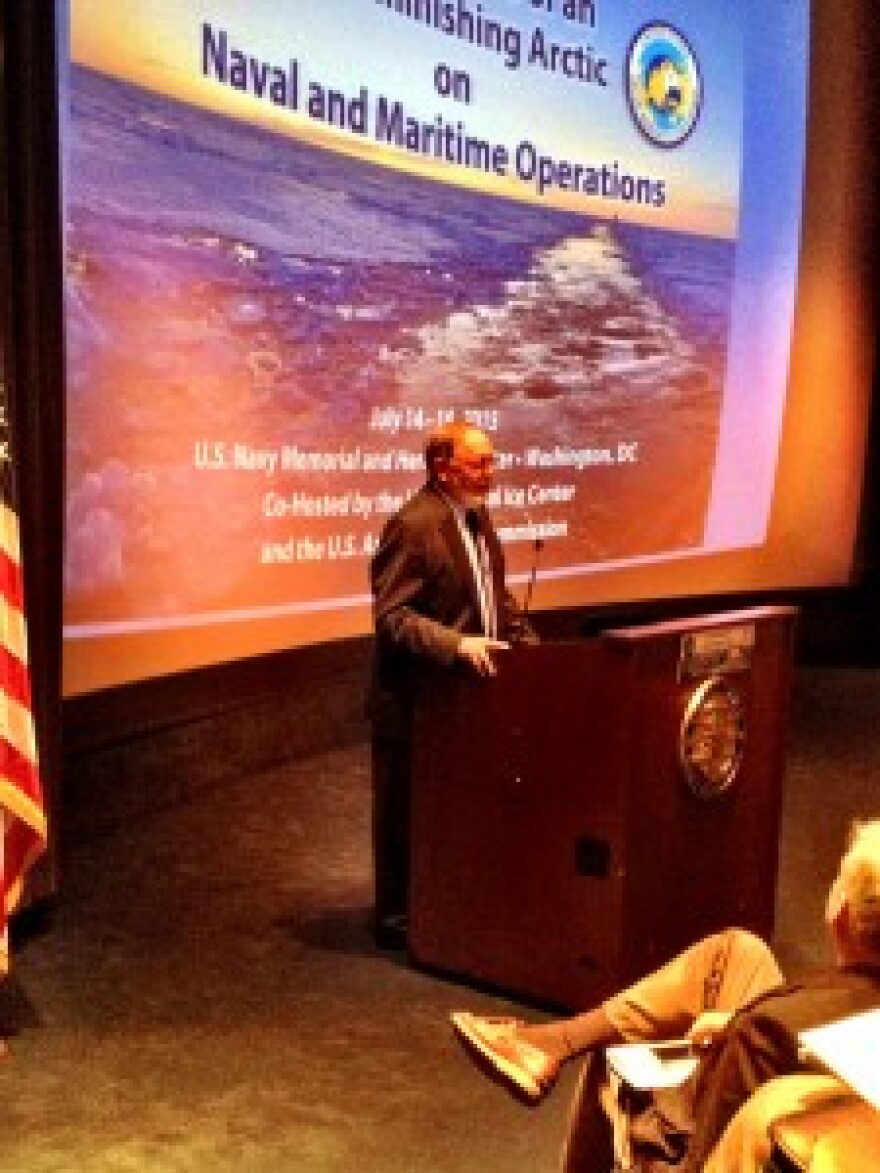Nothing illustrates American disinterest in the Arctic as much as the tiny inventory of U.S. icebreakers: One heavy-duty ship, one medium and one down for repair. Alaska leaders and some federal officials say the country can’t assert its national interests, or see the benefits of increased shipping and resource development in the Arctic, without more icebreakers. But some advocates now say, why buy when you can lease?
Coast Guard Commandant Paul Zukunft sounds a little embarrassed by the state of the icebreaking fleet.
"We have eight times the GDP -- probably about eight and a half right now -- of Russia," he said. "Russia has a fleet of over 25 ocean-going icebreakers. They’re building six new nuclear icebreaker. And here we are trying to cobble together and maybe reactivate a 37-year-old icebreaker. Because that’s the best we can do."
For years, Alaska’s delegation to Congress has pleaded for money to build a new icebreaker, and they’ve won appropriations of a few million dollars for pre-construction work. But the Coast Guard says it needs six icebreakers, and a single new ship is projected to cost a billion dollars or more, roughly equal to the Coast Guard’s entire capital budget. Alaska Congressman Don Young says next week he’ll offer a bill to promote alternative funding.
"This is a problem," he said at an Arctic symposium in Washington today. "I’ve been trying to get an icebreaker. (Sen.) Lisa Murkowski’s been trying to get an icebreaker. But Congress is not about to appropriate $1 billion, 400 million for an icebreaker. So we have to figure out to get the money either from the Army, the Navy and the Coast Guard ... a collective organization together to build us icebreakers."
Young says the government should seek bids from the private sector to build an icebreaker and lease it to the government, with the expense divvied among several agencies. Young says he knows leasing is not the Coast Guard’s top choice.
"Everyone wants to own their own ship. That’s, by the way, one of the worst things we could do. You own a boat, you find out how much money you lose on it," he said. "So if you’ve got somebody that’s going to lease it to you, and maintains it for you to standard, that’s the way I’d go."
Some Coast Guard leaders, over the years, have questioned whether a leased ship is appropriate for frontline government missions, where the Coast Guard is asserting U.S. sovereignty. Admiral Zukunft, the current Coast Guard boss, says the service can’t do as much with a leased ship.
"First and foremost, you need to have some degree of agility," he said.
You may need to operate that platform beyond what it was designed to operate in a given year, based on the mission demands that are being placed upon it."
For any lease-or-buy decision -- whether it's a a house, a car or a ship -- a key factor is how long you intend to keep the asset. After a certain point, buying has the advantage. Also, Zukunft says, Congressional budget rules essentially charge an agency the whole cost of the lease in the first year.
"So from a business case, a lease option right now, does not provide us an optimal return on investment for a platform that quite honestly we’ve proven that we can maintain these for 35 or 40-plus years," he said.
But, as with houses and cars, if you don’t have the money, buying isn’t really an option. Sen. Lisa Murkowski this week plugged an idea of former lieutenant governor Mead Treadwell. He says the United States could join other countries to provide an icebreaker escort service. As he sees it, with Canada, Finland, China, maybe Korea, and maybe Russia, the U.S. could set up regular trans-polar convoys. Treadwell says it requires thinking of the Arctic as a shared business asset, like a jointly owned canal.
“Suppose we told the ships of the world, ‘meet us at a Port Clarence every Wednesday at noon. And there’s an icebreaker heading out to a port in Iceland or a port in Norway,’” Treadwell said. “And you might pay a fee like you pay a fee for a canal.”
Treadwell’s concept couldn’t stand in for some of the Coast Guard’s government missions, but Murkowski says, maybe it makes sense to focus on the commercial service first.


